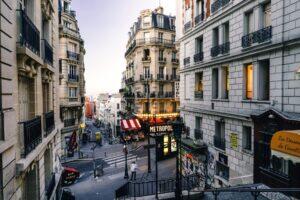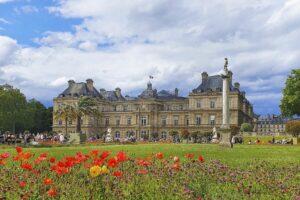Fodor's Expert Review The Louvre

Simply put, the Louvre is the world's greatest art museum—and the largest, with 675,000 square feet of works from almost every civilization on Earth. The Mona Lisa is, of course, a top draw, along with the Venus de Milo and Winged Victory. These and many more of the globe’s most coveted treasures are displayed in three wings—Richelieu, Sully, and Denon—which are arranged like a horseshoe around I. M. Pei's Pyramide. The giant glass pyramid surrounded by a trio of smaller ones opened in 1989 over the new entrance in the Cour Napoléon.
While booking admission tickets online in advance is no longer required, it's the best way to avoid disappointment: the €17 timed entry guarantees admission while €15 tickets bought on-site are only sold when space is available—and given a recent decision to limit daily visitors to 30,000 (a third of the previous norm), it's unlikely that spontaneous appearances at the museum will result in a successful visit. Slick... READ MORE
Simply put, the Louvre is the world's greatest art museum—and the largest, with 675,000 square feet of works from almost every civilization on Earth. The Mona Lisa is, of course, a top draw, along with the Venus de Milo and Winged Victory. These and many more of the globe’s most coveted treasures are displayed in three wings—Richelieu, Sully, and Denon—which are arranged like a horseshoe around I. M. Pei's Pyramide. The giant glass pyramid surrounded by a trio of smaller ones opened in 1989 over the new entrance in the Cour Napoléon.
While booking admission tickets online in advance is no longer required, it's the best way to avoid disappointment: the €17 timed entry guarantees admission while €15 tickets bought on-site are only sold when space is available—and given a recent decision to limit daily visitors to 30,000 (a third of the previous norm), it's unlikely that spontaneous appearances at the museum will result in a successful visit. Slick Nintendo 3DS multimedia guides (€5), available at the entrance to each wing, offer a self-guided discovery of the museum in a variety of languages, and extended openings (noctournes) on Friday evenings allow you to visit the museum until 9:45 pm.
Having been first a fortress and later a royal residence, the Louvre represents a saga that spans nine centuries. Its medieval roots are on display underground in the Sully wing, where vestiges of the foundation and moat remain. Elsewhere in this wing, you can ogle the largest display of Egyptian antiques outside of Cairo, most notably the magnificent statue of Ramses II (Salle 12). Upstairs is the armless Venus de Milo, a 2nd-century representation of Aphrodite (Salle 7). Highlights of the wing’s collection of French paintings from the 17th century onward include The Turkish Bath by Jean-August-Dominique Ingres (Salle 60). American Cy Twombly’s contemporary ceiling in Salle 32 adds a 21st-century twist. In the Denon wing, climb the sweeping marble staircase (Escalier Daru) to see the sublime Winged Victory of Samothrace, carved in 305 BC. This wing is also home to the iconic, enigmatic Mona Lisa (Salle 711); two other Leonardo da Vinci masterpieces hang in the nearby Grand Galerie. The museum’s most recent architectural wonder is here as well—the 30,000-square-foot Arts of Islam exhibition space, which debuted in 2012. Topped with an undulating golden roof evoking a flowing veil, its two-level galleries contain one of the largest collections of art from the Islamic world. After admiring it, be sure to visit the Richelieu wing and the Cour Marly, with its quartet of horses carved for Louis XIV and Louis XV. On the ground floor, the centerpiece of the Near East Antiquities Collection is the Lamassu, carved 8th-century winged beasts (Salle 4). The elaborately decorated Royal Apartments of Napoléon III are on the first floor. On the second floor, French and Northern School paintings include Vermeer's The Lacemaker (Salle 38).
READ LESS









